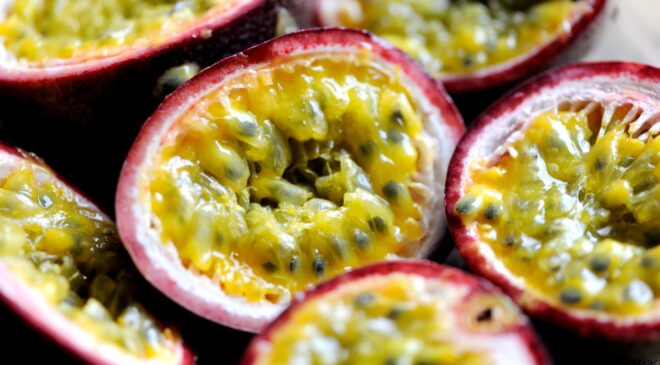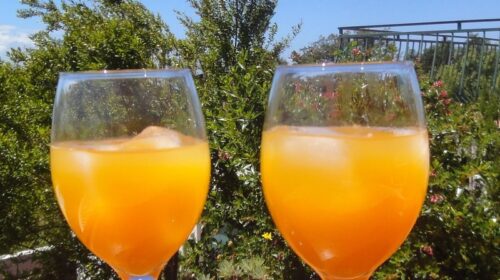Madeira passion fruit – O Maracujá da Madeira
Originating in South America and Central , passion fruit is grown throughout the world , including Asia, Australia , South Africa and Europe , in some areas of the Mediterranean coast . The most cultivated varieties are purple and yellow passion fruit (or Brazilian , as is known to us ) .
The first is very aromatic, sweet, slightly acidic whereas the second is less aromatic, more sweet and less sour. The plant is called passion or ” maracujaleiro ” and it is a fast growing vine that lacks a support . This support can be created by man ( walls , trellis or espalier cross ) , or the passion fruit holds up another woody plant such as a fruit tree or vine, which can involve the same , due to its vegetative development . It is known in the region since early date , not knowing documented references to the date of introduction .
The book ” Promoting Fruit in Wood ” ( 1947) by Professor Joaquim Vieira Engineer Nativity , it is known that by the end of the 30s of last century , the passion fruit islanders were exported to London , England. After World War II and the report of the final course Agronomist Leandro Aguiar House , ” Subtropical Fruits in Madeira ” 1955 , was initiated in 1949 the export of passion fruit juice . Today , the ” maracujaleiro ” is across the Autonomous Region of Madeira , especially in the municipalities of Machico , Santa Cruz , Ribeira Brava , Ponta do Sol and Calheta on the south coast and in the municipality of Santana on the north coast .
There is passion fruit throughout the year , depending on altitude, geographical location and the local weather conditions , considering the summer , the “peak ” production . The fruits of the largest holdings are intended primarily for industry concentrates , liqueurs and pastries , and fruit from the feet scattered , are marketed for fresh consumption . There is another edible species , banana passionfruit , which spontaneously vegetation on the northern slope , being taken as an invasive plant . The most common diseases are anthracnose and fungi that attack the neck and root of the plant , and the most common pests are aphids , the mealybugs , mites , fruit flies , lizards and mice . However , the disease is the most significant virus lenhificante the passion that emerged in the early 80s of the twentieth century and decimated much of this culture in Madeira . In 1992 , the Regional Directorate of Agriculture through the Division of Fruit Crops, in the person of Agronomist Rui Nunes has undertaken a program of breeding maracujaleiro , obtaining plants resistant or tolerant to this disease. These are sold by the said department a few years now , with the designation ” Perry Vidal .”
Madeira Passionflower is widely used for homemade liqueurs
One of the Christmas traditions is the making of liqueurs and in time almost every household these drinks liqueurs prepared to offer to guests at this date .
Passion fruit liqueur
Ingredients:
750gr of sugar
1l water
1l of alcohol
passionfruit 30
Preparation :
Boil sugar with water and allowed to cool. Then it is the pure juice of passion fruit and remove the seeds . Then join the high water with the sugar and alcohol and bottled up . The longer you have saved before served is tastier .
The famous pudding desserts Passion is one of the most sought after by those who visit us
Its preparation is very simple and necessary :
1 can sweetened condensed milk
1 packet gelatin pineapple
6 or 7 or packaging passion fruit passion fruit pulp
2 packages of cream
First prepares gelatin, allow to cool , add the pulp of passion fruit and condensed milk and stir well .
Aside from hitting up the cream and join the preparation , mixing until a homogeneous mixture .
At the end leads to the fridge and serve when you are fresh.




